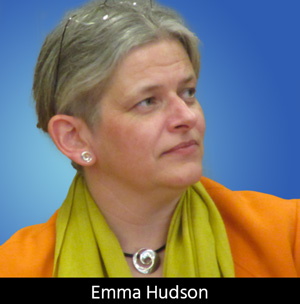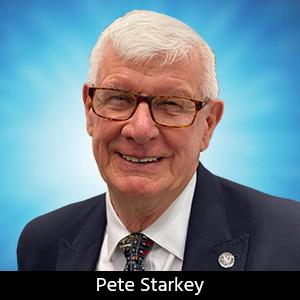|
|
ICT Webinar Review June 1st 2021 Recyclable PCBs, and More Pete Starkey, I-Connect007 |
 |
Another excellent technical webinar on June 1, introduced and moderated by ICT Chair Emma Hudson, provided updates on developments in recyclable PCBs, innovations in transparent flexible displays, and X-ray fluorescence techniques for the determination of the thickness and composition of metal coatings. “It is time for us to take responsibility for our electronics and the impacts that they are having on the planet,” said Jack Herring, CEO of Jiva Materials, who reported the progress of the ReCollect project for recyclable PCBs. |
 |
Recyclable PCBs Commenting that 32% of all e-waste consisted of small domestic equipment and that current recycling techniques for the recovery of precious metals such as gold, silver, and palladium involved shredding and incineration, he explained that the focus of the ReCollect (Recyclable Composite Laminates for Electrical Goods) project was to develop an alternative way of managing end-of-life circuit boards by removing difficult-to-recycle fibreglass-epoxy PCBs from the supply chain. Primary objective was to demonstrate the feasibility of producing a PCB substrate in high volumes within the UK, with performance comparable to CEM1 and FR-4, with circuits formed by additive or subtractive techniques. An important secondary objective was to ensure its compatibility with existing aqueous fabrication processes. Target market was the white goods and domestic appliance sector, including dishwashers, fridges, and washing machines, the manufacturers of which already had well-established recovery schemes in place, enabling PCBs made on the new substrate to be removed and recycled. Jiva’s patented solution was a flame-retardant composite of natural fibres and a polymer resin that dissolved in hot water yielding non-toxic and biodegradable by-products, avoiding energy-intensive recycling by shredding and incineration and enabling substantially higher yields in precious metal recovery. Herring estimated the soluble PCB to have 60% lower carbon footprint than the equivalent FR-4 product and a plastic saving equivalent to 620 grams per square metre. Indeed, if used in just 1% of European domestic appliances, 100 tons of plastic could be eradicated. Small quantities of PCBs had been produced in Jiva’s UK development laboratory and the recycling process was being developed to establish a take-back scheme for end-of-life electronics and enable customers to benefit from an effectively circular supply chain. Herring showed examples of single- and double-sided printed electronics on unclad substrate, assembled using conductive silver epoxy, with low-temperature soldering in development. Copper-clad laminates had been manufactured, and mechanical drilling and routing parameters had been established. Etching had been successfully demonstrated and processes for through-hole connectivity were being explored. The substrate was thermoplastic and potentially mouldable into three-dimensional profiles. An extensive third-party testing programme was nearing completion, and had shown mechanical properties to be comparable to CEM1 and electrical properties comparable to CEM1 and FR-4. Flame retardancy was in line with UL 94 V-0, and it was planned to submit samples for formal UL classification in Q4 2021. The material had attracted interest from white-goods, LED lighting, and computer-peripherals industries. |
 |
Transparent Flexible Lighting The topic of the second presentation was developments and innovations in transparent flexible lighting, delivered by Dr. David Shaw, business manager for semiconductor technologies at A-Gas Electronic Materials. He explained that although indium tin oxide had become established as the industry standard transparent conductive film and would continue to be dominant on glass substrates, it had limited capability for flexible applications. It was not formable or stretchable, it was not as transparent or as conductive on plastic as on glass, and circuit patterns were costly to create. Alternative materials included conductive polymers such as PEDOT, silver nanowires, and copper or graphene micromeshes, none of which could fully satisfy the combined needs for transparency, conductivity, affordability, environmental stability, flexibility and formability. A carbon nanotube—silver nanowire hybrid material had now been developed which not only met these requirements but could also be cost-effectively patterned by basic technologies without the need for high-resolution laser ablation. A flexible film, roll-to-roll coated with a silver nanowire dispersion, was screen-printed with a conductor pattern using a carbon nanotube ink, after which the exposed silver nanowire areas were removed with a mild ferric nitrate etchant to create a patterned transparent conductive film. A range of sheet resistances from 10 to 75 ohms per square could be achieved. If copper micromesh materials were used, sheet resistance could be reduced to 1 ohm per square. Application areas included transparent heaters, transparent antennas, transparent lighting films and transparent touch sensors, and there were enormous growth opportunities in automotive, transparent LED and digital signage market segments. |
 |
X-ray Fluorescence Techniques With the proliferation of thin metallic final finishes for soldering and wire bonding: ENIG, ENEPIG, EPAG, RAIG, IGEPIG, DIG, and so on, accurate thickness measurement has always been a challenge. It must be fast, precise, non-destructive and cost effective. The IPC-4552A performance specification for ENIG refers to X-ray fluorescence methods, making some recommendations regarding instrumentation, discussing verification of the measurement process and assessing its capability. In the final presentation, Zach Dismukes, global product manager with Bowman Analytics, reviewed new developments in X-ray fluorescence techniques to enhance throughput and precision in ENIG and ENEPIG measurement. He began with an enlightening introduction to the principles of X-ray fluorescence, without venturing too deeply into the theoretical physics, describing how X-rays interacted with inner-shell electrons to cause some to be ejected and be replaced by electrons from higher orbitals, filling the holes left behind. The energy difference of electrons moving between orbitals was released in the form of photons with a specific wavelength characteristic of the element. Thus X-ray fluorescence related to the absorption of radiation of a specific energy, resulting in the re-emission of radiation of a different energy. This gave the basis of a spectroscopic analytical method for measuring elemental composition and plating thickness. In principle, the method was applicable to all metallic elements from aluminium to uranium, at thicknesses from sub-nanometre to microns, and could measure thickness and composition simultaneously, up to five layers and 25 elements. Recent developments in X-ray fluorescence spectroscopy gave improved stability and enabled the statistical capability requirements of IPC-4552A to be met with a shorter measurement time. Dismukes explained the advantages of large-window silicon drift detector technology, and polycapillary optics for optimised focusing of x-ray beams. He also discussed the characteristics of different tube targets and described some of the advanced software-automation features now available, such as autofocus, pattern recognition, XYZ programming, and fully-customisable data-export for automatic generation of reports. |
 |
After moderating a Q&A session, Emma Hudson thanked all participants and particularly acknowledged ICT technical director Bill Wilkie’s smooth organisation of the event. Although ICT’s series of technical webinars had been extremely successful, she was hopeful that there could soon be a return to live seminars and symposia with all of their networking benefits. Published by kind permission of Pete Starkey, I-Connect007 |
